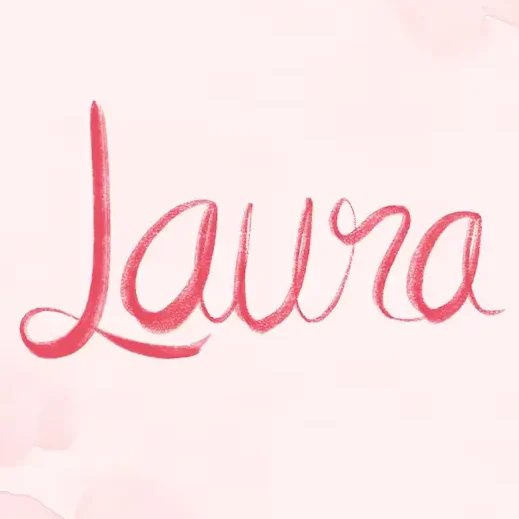The real main character in Swift’s latest album, ‘The Tortured Poets Department’ isn’t an ex, but Swift herself. How she’s chosen to narrate her own life, and what she’s chosen to reveal through her music, is telling.
Long before anyone heard a note, Taylor Swift’s new album caused controversy among the grammarians.
The fuss was about the title, The Tortured Poets Department, and its conspicuously absent apostrophe. Should “poets” not have been possessive? If it had been, was the singular or plural more appropriate? Was this a mistake? Or by design? English teachers, grammar hobbyists, and the standards editor of The New York Times weighed in. There is, they said, no intrinsically correct answer—just one that differs based on the album title’s intended meaning. The Tortured Poet’s Department, for example, would imply a department belonging to a singular tortured poet, and perhaps her place of work or where one could go to find her. The Tortured Poets’ Department would suggest a similar situation, just with all the tortured poets. In omitting the apostrophe altogether, it’s the authors themselves who go under the microscope in The Tortured Poets Department—though perhaps the singular would have been most appropriate.
Few pop stars make their authorial voices as central to their work as Taylor Swift. She broke out in country music, a genre in which storytelling is fundamental. She writes her own songs, which are personal and, increasingly, meta-textual, in the sense that she has begun to tell stories about fame and its inherent self-mythologizing. In the best parts of The Tortured Poets Department, Swift advances this work, writing about herself not just as Taylor Swift the person but as Taylor Swift the performance. “This town is fake, but you’re the real thing,” coos an industry insider to a young Swift in “Clara Bow,” the closing track of the double album’s first half. But the Swift who wrote the song knows that “the real thing” is itself a sham when the job is telling tales. The Tortured Poets Department is full of its own stories—of goodbyes and getaways and ghosting—but its central character is Taylor Swift—author. And it’s consumed by whether or not she is a reliable narrator.
What does it mean to write your own life? On “How Did It End,” Swift processes a breakup through the need to explain it—to worried friends and eager gossipers alike—and sees the story become theirs before she’s even figured out the true answer for herself. “Come one, come all, it’s happening again,” she sings, announcing her own heartbreak. In the first verse, Swift’s use of “we” as she explores what went wrong seems to include just herself and her former partner. But by the second, the circle extends to friends, then cousins, then people around town. By the end, they’ve all drawn their conclusions—despite the fact that Swift herself is still asking the titular question.
Perhaps less subtly, “I Can Do It With a Broken Heart” underscores that what we see from Swift is often an illusion. “Lights, camera, bitch, smile—even if you want to die,” she sings, over poppy production that evokes the closing numbers of her blockbuster Eras Tour. This song is a statement about an emotionally turbulent period in her life, sure, and you feel for her, but it’s also about what it means to be a performer and a professional—and a good one. “Try and come for my job,” Swift says, tossed off, at the end of the track. If you read the separation of the personal and professional selves on the song as healthy, it’s really a song about competence. Swift is practically begging her audience to understand that she is vocationally required to put on a show.
If some stories on The Tortured Poets Department are merely delusive, others are outright dangerous. On “The Smallest Man Who Ever Lived,” the most eviscerating track of the album (and possibly of Swift’s career), she wonders if an ex who love bombed, then ghosted, her, was a secret assassin or an author writing a tell-all—with both possibilities presented as equally vicious. On “The Bolter,” having “the best stories” means having the scar tissue from a collection of bygone relationships. It’s a far cheerier song than “The Smallest Man Who Ever Lived,” but it still suggests that a collection of tales to share over brunch is not much of a consolation prize.
The song “The Albatross,” an ethereal, if somewhat dozy, tune from the 2 a.m. release, draws a particularly poetic—and meta-textual—connection. In it, Swift references the English poet Samuel Taylor Coleridge’s “The Rime of the Ancient Mariner,” in which a sailor on a boat caught off course shoots an albatross that was flying overhead. The ship’s crew comes to view the bird as a curse, and forces the mariner to wear its corpse around his neck as a reminder of his bad deed.
It’s an epic poem—626 lines long. In its time, it was criticized both for its wordiness and its inscrutability. Some scholars have argued it has no singular moral; others have said it has no moral at all.
In Tortured Poets, Swift likewise asks a lot of her audience. The album begs a close read and rewards fourth, fifth, sixth, and 16th listens. Many songs have third verses, unusual for pop tune packaging. The double album runs over an Easter egg–packed two hours. Swift has more than enough fans who want to do this homework—and who feel rewarded by the excavation—to set streaming record after record. But for those outside her core fan base who don’t, it does become somewhat illegible. In the relatively lukewarm critical reception to the album, a main critique is its lack of concision. (Even as someone who enjoys the record, I tend to prefer its clear and declarative moments over its most intricate—I’ll take a line like “I hope it’s shitty in the Black Dog,” for instance, over the slant rhymes of “Fresh Out the Slammer.”) An album about the author’s own writing suggests some required reading to even make sense of the premise.
The second half of the double album ends with “The Manuscript,” a piano ballad that reads a lot like the story of Swift recording the 10-minute version of “All Too Well,” and turning that story into a short film, which she did in 2021. One could read TTPD as a whole as a reference to Swift’s need to write to move past events in her life, but “The Manuscript” is the only song on the record that tells that story.
And the years passed
Like scenes of a show
The Professor said to write what you know
Lookin’ backwards
Might be the only way to move forward
The song ends with Swift shedding herself of the entire ordeal. “Now and then I reread the manuscript,” she sings. “But the story isn’t mine anymore.” Ending on that sentiment feels intentional. It’s possible to overthink these things—I’m reminded of a story the musician and author Michelle Zauner has told about meeting Swift at a Grammys after-party in 2023 and asking her a carefully-constructed question about parallels between her song “invisible string” and Ernest Hemingway’s writing.
“OK, English major!” Swift said, then walked away.
Maybe it’s not that deep. Or maybe Swift had had two cosmos and didn’t feel like chatting. But it’s also possible that history’s most personal pop star actually does want some veil of mystery between Taylor Swift and Taylor Swift. She has shared quite a lot over the years, and it’s possible to read TTPD as a reflection on what it means to have written your entire life into art and commerce. Sometimes, Swift seems to find that the answer is catharsis. But more often, it sounds like the real person is no match for the storybook version. The pen can heal, she seems to say. But it can also be the instrument of torture itself.

Laura Davis is an entertainment aficionado who delves into the glitz and glamour of the entertainment industry. From Hollywood to Broadway, she offers readers an insider’s perspective on the world of movies, music, and pop culture.

:no_upscale()/cdn.vox-cdn.com/uploads/chorus_image/image/73304940/TaylorOnTaylor_Getty_Ringer.0.jpg)






